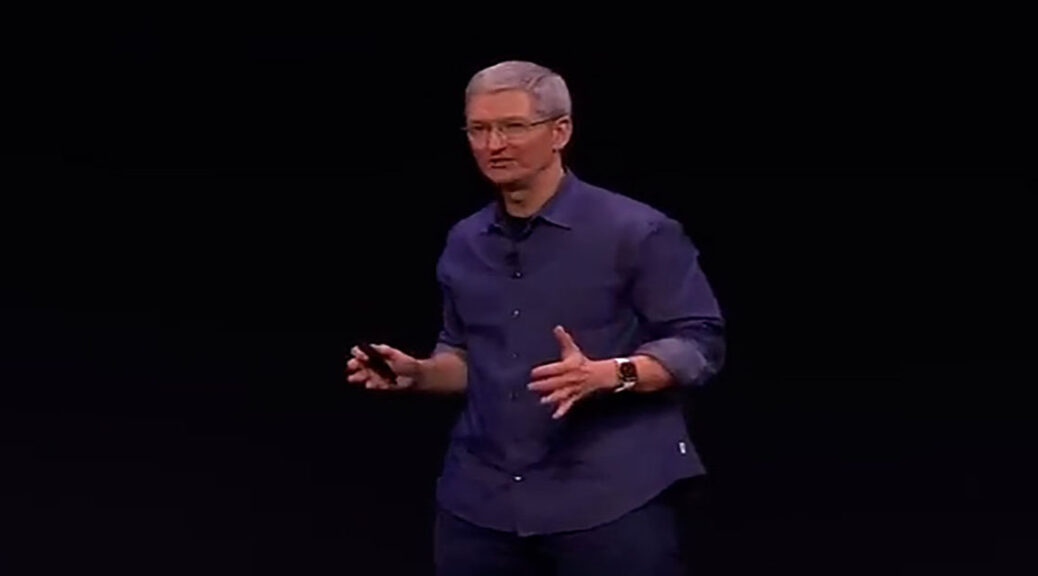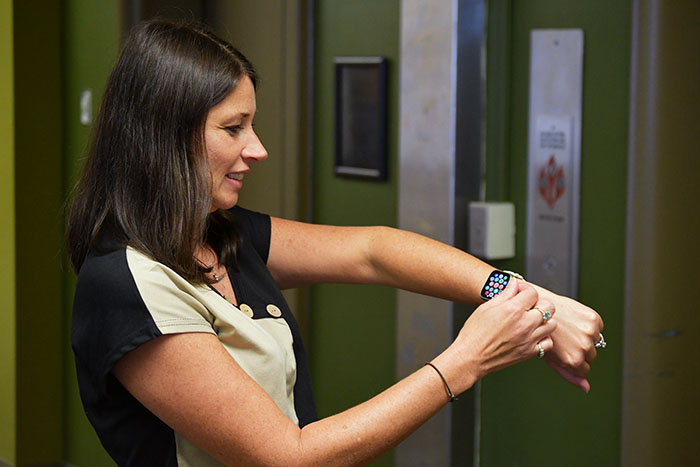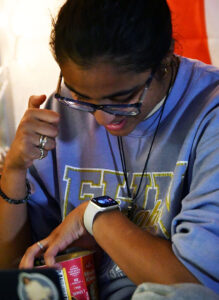Three years after NIL ruling, College athletic departments tackle changes
Story by Alex Spielman, Emma Pearce and Lily Hagedorn
BLOOMINGTON, Ind. (Nov. 5, 2024) – The crowd screams. Beer cans are airborne, sprinkling the student section with alcohol. Everyone is on their feet. The Indiana Hoosiers just beat Nebraska with a score of 56 to 7. The win against the Cornhuskers was the Hoosiers’ seventh of the season. They have not lost a game.
The 2024 game against Nebraska was the first IU football game to sell out since the Ohio State game in 2021. Indiana would go on to sell out the rest of their home games. The Hoosiers’ winning season was drawing national attention, bringing the FOX “Big Noon Kickoff” show one weekend and ESPN’s “College Gameday” the next. Indiana became a nationally ranked football team.
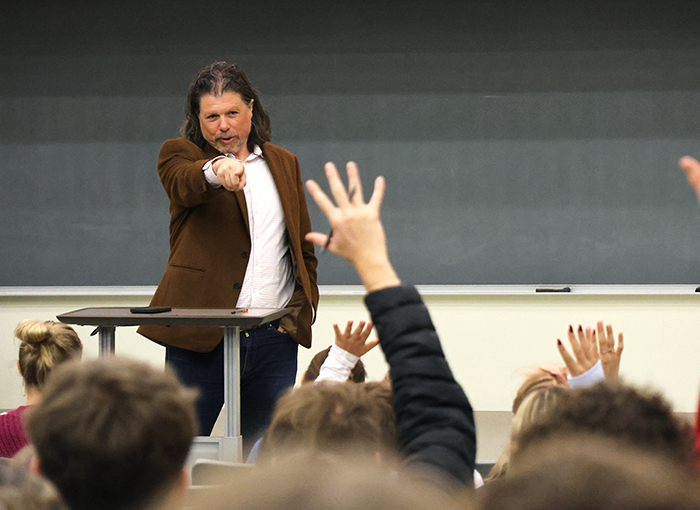
“At the end of the day college athletic departments and their teams and the coaches that control those teams, they want to win, and they have a limited amount of resources,” Director of the National Sports Journalism Center Galen Clavio said. “Whatever small positive effect you might have from a really popular high school athlete coming in is going to be a drop in the bucket compared to the effects of having a winning team. I mean, look at IU football. Look at the attention on IU football. They’re going to sell out maybe four games this year. They’re not doing it because they have popular NIL players on their team, they’re doing it because they’ve got good players that are winning games.”
In 2021 the Supreme Court ruled that college athletes could hold NIL (name, image and likeness) deals, which would allow them to profit off the use of their name or photo. After the ruling went into effect, the amount of money a university could offer an athlete started to affect the recruiting process, changing collegiate athletic departments.
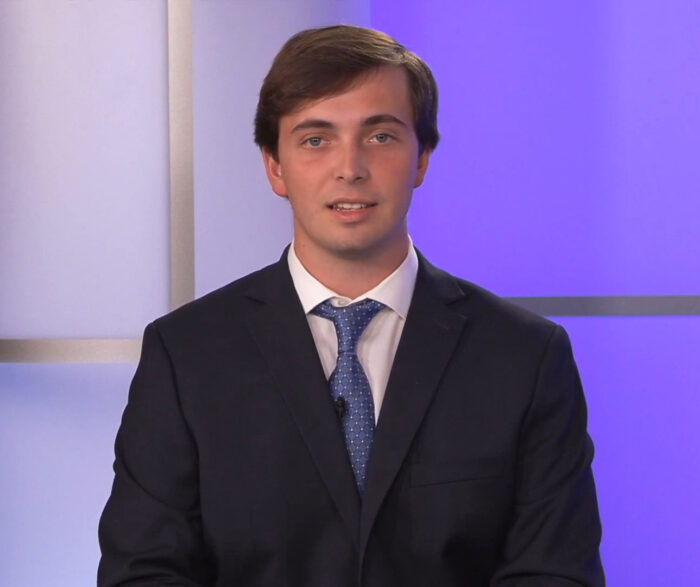
“What recruitment revolves around now is NIL. If you go to a big school like Indiana, there are going to be a lot of NIL deals, and it doesn’t really matter if you’re the most talented on the team or not…Most players don’t even look at the system that best fits them, they look at the amount of money that they’re going to get. It’s kind of a sad change, but it’s a change that we have to make,” Indiana University Athletics Intern Logan Krzykowski said.
The transfer portal is being used more often for athletes who are not satisfied with their current deal or team. To convince athletes to transfer, schools can offer NIL deals. Eight players on the 2024-25 Indiana University men’s basketball team roster transferred from other schools.
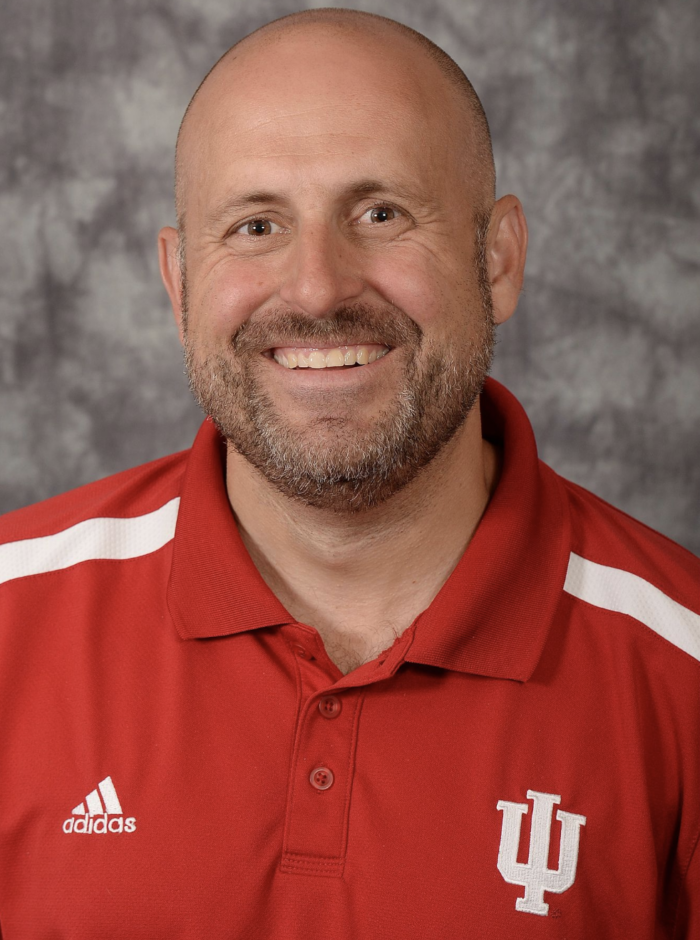
“I think NIL has impacted mid to major transfers more than anywhere else. It also kind of shortens the patience of the backup. A lot of people were willing to stick it out to wait for their chance to break into the starting lineup before. Now it’s like ‘it’s been a year. You haven’t started me. I’m transferring, and I can get paid to do it. I might transfer to a school that’s not as good at this sport as yours, but they’re going to let me play right away, so, I’m going to go do that,’” Indiana University Senior Associate Athletic Director and Cuban Center Director Jeremy Gray said.
Sometimes, the transfer portal does not work out for athletes. In 2024, the University of Nevada Las Vegas verbally offered quarterback Matthew Sluka $100,000 to transfer from Holy Cross. The agreement was not in writing, however, and UNLV did not have the promised NIL money for Sluka.
“Right now colleges and universities have been steadfast above all else in arguing that athletes aren’t employees, that they can’t be considered employees, and there’s a longstanding set of legislative approaches that the NCAA has taken that have tried to make that commonplace. I would have told the quarterback who ended up transferring this is why you don’t take a verbal promise about anything involving money,” Clavio said.
The rise in NIL deals is causing large financial effects for athletic departments. In recruiting players this past year, IU men’s basketball reportedly spent around $4 million Indiana University Men’s Basketball allegedly spent around $4 million in NIL money to recruit players this past year. Other schools are struggling to keep up, and their programs are starting to show it.
“I think one of the problems with the NCAA circumstance that we have right now is that there are too many teams in the mix who don’t have the financial resources to compete… I do think that college athletics has had a gradual separation financially between the universities that are fully invested in their athletics programs and the ones that, for whatever reason, just can’t hit that level. I think we’re seeing that in higher education in general,” Clavio said.
Athletes are drawn to better programs, especially with the influx of money that programs can now offer players. The ruling has made it possible for athletes to be rewarded for their contributions to their schools.
“This is not a case of new rights being granted to college athletes, it is instead the removal of restrictions that were being imposed by college athletic departments upon college athletes, essentially telling those people ‘You do not get the same rights as the other people that are college students,’” Clavio said.
https://youtu.be/JKraVa6PAyw
Bloomington residents speak on how the 2021 NIL ruling has affected college athletic departments. The ruling made it legal for college athletes to profit off of the use of their name, image, and likeness.
Featured image by Emma Pearce
###



